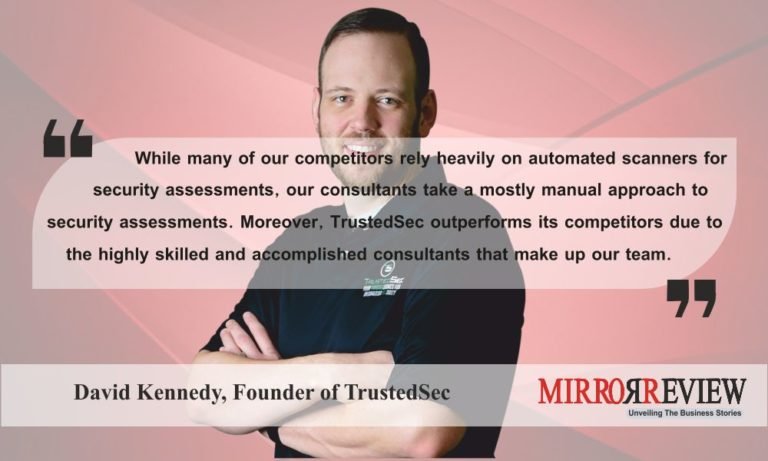Rekayasa keamanan siber kerja apa? Let’s dive into the importance of cybersecurity in the workplace and discover the potential threats and consequences that businesses face. Find out how to create a secure work environment and protect sensitive information.
The Importance of Cybersecurity in the Workplace
Cybersecurity plays a crucial role in today’s modern work environment. With the increasing reliance on technology and the internet, businesses are exposed to various cyber threats that can have severe consequences if not properly addressed. It is essential for organizations to prioritize cybersecurity to protect their sensitive data, maintain the trust of their clients, and ensure the smooth operation of their business.
The Significance of Cybersecurity
In this digital era, businesses heavily rely on computers, networks, and the internet to store and transmit valuable information. This includes financial records, customer data, trade secrets, and intellectual property. Without adequate cybersecurity measures in place, these assets are at risk of being compromised by hackers, malware, or other cyber threats.
Computer security is a crucial concern in today’s digital age. According to experts, ensuring the security of computer systems is vital to protect sensitive information from unauthorized access and potential cyber threats. To gain a better understanding of computer security, it is essential to refer to the insights of professionals in the field.
You can find valuable information on this topic from keamanan komputer menurut para ahli . Their expertise and knowledge provide valuable insights into the best practices and strategies to safeguard computer networks and data. By implementing their recommendations, individuals and organizations can enhance their defense mechanisms and reduce the risk of cyber attacks.
Examples of Cyber Threats
Cyber threats come in various forms, each with its own methods and objectives. Some common examples include:
- Malware: Malicious software, such as viruses, worms, or ransomware, that can infect computer systems and disrupt operations.
- Phishing: Deceptive emails or websites designed to trick individuals into revealing sensitive information, such as passwords or credit card details.
- Denial of Service (DoS) attacks: Overwhelming a network or website with excessive traffic to render it unavailable to legitimate users.
- Insider Threats: Employees or authorized individuals who intentionally or unintentionally compromise the security of the organization.
Potential Consequences of a Cybersecurity Breach
A cybersecurity breach can have devastating consequences for businesses. These may include:
- Financial Loss: The cost of recovering from a cyber attack can be substantial, including expenses related to investigation, remediation, and potential legal action.
- Reputation Damage: A data breach or security incident can erode trust and confidence in a company, leading to a loss of customers and business opportunities.
- Intellectual Property Theft: Competitors or malicious actors can steal valuable trade secrets, research, or proprietary information, undermining a company’s competitive advantage.
- Operational Disruption: Cyber attacks can disrupt normal business operations, leading to productivity loss, downtime, and potential service disruptions.
Tips for Creating a Secure Work Environment
To create a secure work environment, organizations should consider implementing the following measures:
- Employee Education and Awareness: Provide regular training and awareness programs to educate employees about cybersecurity best practices, such as recognizing phishing attempts and using strong passwords.
- Secure Network Infrastructure: Implement robust firewalls, intrusion detection systems, and encryption protocols to protect the network from unauthorized access and data breaches.
- Regular Software Updates: Keep all software, including operating systems and applications, up to date with the latest security patches to address vulnerabilities.
- Data Backup and Recovery: Regularly backup important data and establish a disaster recovery plan to ensure business continuity in the event of a cybersecurity incident.
- Access Control and Privilege Management: Implement strong access controls, including multi-factor authentication and least privilege principles, to limit unauthorized access to sensitive information.
Remember, cybersecurity is not a one-time effort but an ongoing process. By prioritizing cybersecurity in the workplace, businesses can better protect themselves from cyber threats, safeguard their valuable assets, and maintain the trust of their stakeholders.
Cybersecurity Best Practices for Employees

Cybersecurity is not just the responsibility of the IT department; it is the responsibility of every employee in the workplace. Employees play a crucial role in maintaining the security of their organization’s data and systems. By following best practices, employees can help prevent cyberattacks and protect sensitive information.
Common Cybersecurity Mistakes Made by Employees
Employees often make common cybersecurity mistakes that can put their organization at risk. These include:
- Using weak passwords or reusing passwords across multiple accounts.
- Clicking on suspicious links or opening email attachments from unknown senders.
- Downloading unauthorized software or files from untrusted sources.
- Leaving their devices unlocked and unattended.
- Sharing sensitive information through unsecured channels.
It is important for employees to be aware of these mistakes and take steps to avoid them.
The Importance of Strong Passwords and Password Management
One of the most important aspects of cybersecurity is having strong passwords. Weak passwords are easy for hackers to guess or crack, putting sensitive data at risk. Employees should follow these guidelines for strong passwords:
- Use a combination of uppercase and lowercase letters, numbers, and special characters.
- Avoid using personal information or common words that are easy to guess.
- Use a unique password for each account and change them regularly.
In addition to strong passwords, employees should also utilize password management tools to securely store and manage their passwords.
Recognizing and Avoiding Phishing Attacks
Phishing attacks are a common method used by cybercriminals to trick employees into revealing sensitive information. Employees should be aware of the following signs of a phishing attack:
- Misspelled or suspicious email addresses.
- Urgent or threatening language in the email.
- Requests for personal or financial information.
- Unsolicited emails asking for login credentials.
To avoid falling victim to phishing attacks, employees should:
- Verify the legitimacy of emails by contacting the sender directly.
- Avoid clicking on suspicious links or downloading attachments from unknown sources.
- Report any phishing attempts to the IT department.
Guidelines for Safe Browsing and Downloading Habits
Unsafe browsing and downloading habits can expose employees to malware and other cyber threats. Employees should follow these guidelines to ensure safe online behavior:
- Only visit trusted websites and avoid clicking on ads or pop-ups.
- Keep software and applications up to date to protect against known vulnerabilities.
- Scan files and downloads for malware before opening or installing them.
- Be cautious when sharing personal information online.
By following these best practices, employees can contribute to a more secure work environment and reduce the risk of cyberattacks.
Computer security is a crucial concern in today’s digital age. Experts in the field have emphasized the importance of protecting computer systems from various threats. According to computer security experts , it is essential to implement robust security measures to safeguard sensitive data and prevent unauthorized access.
They suggest using strong passwords, regularly updating software, and installing reliable antivirus programs. Furthermore, experts recommend being cautious while browsing the internet and avoiding suspicious websites or clicking on unknown links. By following these best practices, individuals and organizations can significantly reduce the risk of cyber attacks and ensure the safety of their computer systems.
Cybersecurity Measures for Remote Work: Rekayasa Keamanan Siber Kerja Apa

Remote work has become increasingly common in today’s digital age. However, with this shift to a remote work environment comes unique cybersecurity challenges that both employees and employers need to address. In order to protect sensitive data and prevent cyber attacks, it is crucial to implement effective cybersecurity measures while working remotely.
Secure Networks and VPNs
When working remotely, it is important to connect to secure networks and use Virtual Private Networks (VPNs). Secure networks provide encryption and protect your data from being intercepted by unauthorized individuals. VPNs add an extra layer of security by creating a secure connection between your device and the internet.
This helps to maintain the confidentiality and integrity of the data you transmit.
- Ensure that you connect to networks that require passwords and have encryption enabled.
- Avoid using public Wi-Fi networks, as they are often unsecured and susceptible to hackers.
- Use a reputable VPN service to encrypt your internet connection, especially when accessing sensitive company resources.
- Regularly update your VPN software to ensure you have the latest security patches.
Securing Home Wi-Fi Networks, Rekayasa keamanan siber kerja apa
Home Wi-Fi networks can be vulnerable to cyber attacks if not properly secured. Here are some tips to help secure your home Wi-Fi network:
- Change the default admin password of your router to a strong and unique password.
- Enable WPA2 or WPA3 encryption on your Wi-Fi network to protect it from unauthorized access.
- Regularly update your router’s firmware to ensure it has the latest security patches.
- Disable remote management of your router to prevent unauthorized access.
- Consider setting up a guest network for visitors, separate from your main network.
Guidelines for Secure Remote Access to Company Resources
When accessing company resources remotely, it is important to follow certain guidelines to maintain cybersecurity:
- Use multi-factor authentication (MFA) to add an extra layer of security when logging into company systems.
- Only access company resources through secure and authorized channels, such as a VPN or secure remote desktop applications.
- Avoid downloading or installing unauthorized software or applications on your work devices.
- Regularly update your devices and applications with the latest security patches.
- Be vigilant for phishing emails or suspicious links, as they may be attempts to steal your login credentials or install malware.
Remember, cybersecurity is a shared responsibility between employees and employers. By implementing these cybersecurity measures for remote work, you can help protect yourself and your organization from potential cyber threats.
Cybersecurity Training and Education

Training and education play a crucial role in promoting cybersecurity awareness within organizations. By providing employees with the necessary knowledge and skills, organizations can greatly reduce the risk of cyber threats and attacks.
Examples of Cybersecurity Training Programs for Employees
- Phishing Awareness Training: This program teaches employees how to identify and avoid phishing emails, which are one of the most common methods used by cybercriminals to gain unauthorized access to sensitive information.
- Password Management Training: Passwords are often the first line of defense against unauthorized access. This training program educates employees on creating strong passwords, using password managers, and implementing two-factor authentication.
- Social Engineering Training: Social engineering involves manipulating individuals to disclose sensitive information or perform certain actions. This training program helps employees recognize and respond appropriately to social engineering attempts.
- Safe Internet Usage Training: This program focuses on teaching employees about safe internet browsing habits, such as avoiding suspicious websites, downloading files from trusted sources, and using secure Wi-Fi networks.
Tips on Creating a Culture of Cybersecurity
- Leadership Support: It is crucial for top management to actively support and prioritize cybersecurity initiatives within the organization. This sets the tone for employees and emphasizes the importance of cybersecurity.
- Regular Training Sessions: Conduct regular training sessions to ensure that employees are up to date with the latest cybersecurity threats and best practices. This helps reinforce the importance of cybersecurity and keeps employees informed.
- Encourage Reporting: Create an environment where employees feel comfortable reporting any suspicious activities or potential security breaches. This promotes a proactive approach to cybersecurity and allows for timely action to be taken.
- Reward and Recognition: Recognize and reward employees who demonstrate exemplary cybersecurity practices. This encourages others to follow suit and reinforces the culture of cybersecurity.
Importance of Regular Updates and Staying Informed
Staying informed about the latest cybersecurity threats is crucial in maintaining a strong defense against potential attacks. Cybercriminals are constantly evolving their tactics, and organizations need to stay one step ahead. Regular updates and staying informed can help in the following ways:
- Identifying New Threats: Regular updates help organizations identify and understand new cybersecurity threats, enabling them to implement appropriate preventive measures.
- Patching Vulnerabilities: Software updates often include security patches that address known vulnerabilities. Regular updates ensure that these vulnerabilities are patched, reducing the risk of exploitation by cybercriminals.
- Awareness of Emerging Trends: Staying informed about emerging trends in the cybersecurity landscape allows organizations to adapt their strategies and defenses accordingly.
- Compliance with Regulations: Regular updates help organizations stay compliant with industry regulations and standards, which often require the implementation of specific cybersecurity measures.
Final Thoughts
In conclusion, cybersecurity is vital in today’s work environment. By implementing best practices and educating employees, businesses can prevent cyber threats and maintain a secure work environment. Stay updated and informed about the latest threats to ensure ongoing protection.
Q&A
What are some common cyber threats that businesses face?
Common cyber threats include malware, phishing attacks, ransomware, and data breaches. These can result in financial loss, reputational damage, and compromised sensitive information.
Why is strong password management important for cybersecurity?
Strong password management helps prevent unauthorized access to accounts and sensitive information. It is important to use unique, complex passwords and enable two-factor authentication whenever possible.
How can employees recognize and avoid phishing attacks?
Employees should be cautious of unsolicited emails or messages asking for personal information. They should verify the sender’s identity, avoid clicking on suspicious links, and report any suspicious activity to the IT department.
What are some tips for securing home Wi-Fi networks for remote work?
To secure home Wi-Fi networks, employees should change the default network name and password, enable encryption, and update router firmware regularly. It is also advisable to use a VPN for a secure connection.
How can companies promote a culture of cybersecurity within their organizations?
Companies can promote a culture of cybersecurity by providing regular training and education, establishing clear security policies, rewarding good security practices, and fostering open communication about potential threats.





